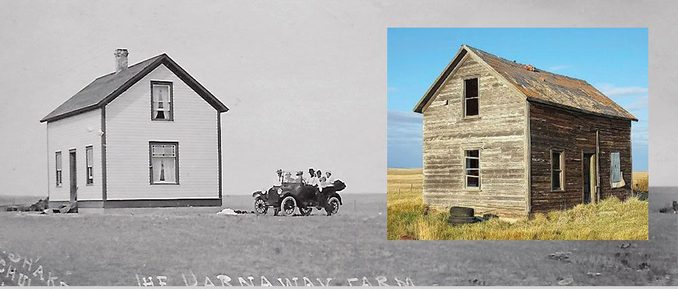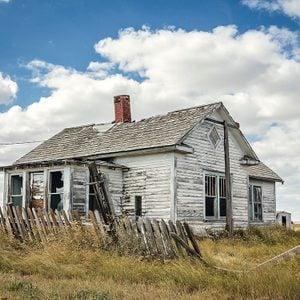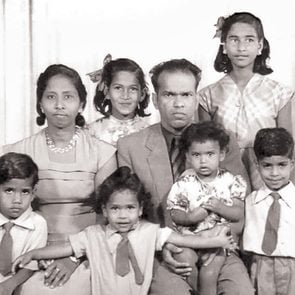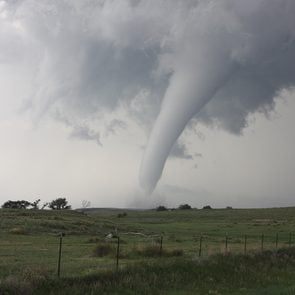Check Out This 100-Year-Old Prairie Homestead, Then and Now
If the walls of this house could talk, what stories they would tell...

If These Walls Could Talk…
A story in the June-July 2018 issue of Our Canada, called “Who Will Tell the Story,” by Sandy Morton inspired me to share the story of an old farmhouse near Schuler, Alberta, where my husband, George, grew up.
In 1910, three brothers left their home in Scotland to begin a new life in Canada—Jock, Tom and Davy. Their older brother (also named George) had come to southern Alberta ten years earlier. The south was well settled by 1910, so the three brothers had to look for homesteads north of Calgary, where they each took up two quarter sections of land, side by side. The land was poorer than the rich land to the south, but there were no trees to chop down, stumps to remove or big rocks to contend with. Soon, portions of each quarter section were cultivated as required by The Homestead Act. The yield was okay during those early years, but then the First World War began and the lads felt compelled to go back overseas and fight for Britain. They drew straws to decide who would remain to work all three farms. Jock got the shortest straw, so Tom and Davy went back and joined up.
Crops were good during the war years, but when the war ended, only Davy returned as Tom had been killed in the fighting. Davy was wounded and could no longer farm, but he stayed with Jock. Tom’s land was sold.
The ensuing years were good and Jock built a huge barn for his ten horses, with a loft to store hay. He fell in love with a girl from Minnesota, Margaret, who was visiting her brother in Schuler. The couple was married in February 1921, and Jock had a grand house built for his bride (above left), with two rooms on the ground floor and two bedrooms on the second floor. They turned the original homestead shack into a chicken house, and began a mixed farming operation. Jock and Margaret also planted a caragana hedge around the house, which is still alive almost 100 years later, with very little care given to it.
Jock and Margaret had three children, including my husband George, and the family had several good years on the farm. But then came the Dirty Thirties with its notorious dust bowl wind storms, grasshopper plagues and crop failures. (Here’s what it was like during the record-breaking heat waves of the ’30s.)
The family managed to hang on, however, and by the time the Second World War began, their crops were doing well again. There was still no electricity or running water, but a telephone was installed. The horses were sold and a tractor and machinery were bought. Neither of Jock’s sons were interested in farming, so when Jock was too old to farm, he and Margaret moved to Medicine Hat and operated the farm under a crop-sharing agreement.
Most of the old farm buildings have been taken down, but Jock and Margaret’s house still stands (above right). My George inherited the old place and bought his uncle Davy’s half section from his estate, uniting the land into one farming operation like in the old days. The farm is still crop-shared.
Next, find out what it was like living in Saskatchewan in the 1930s.






